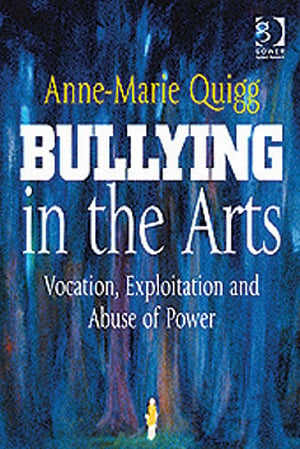Facing up to bullying
Bullying doesn’t always involve a physical element. Anne Marie Quigg sees a culture of coaching as being one way of preventing it

Adult bullying can include overt aggression or hostility, such as threats of physical violence. However, a more covert form of bullying is more common – disrespectful, manipulative behaviour designed to undermine or punish someone unjustifiably. It is malicious, insulting, offensive and/or intimidating abuse that occurs on more than one occasion. Research demonstrates that it can take some considerable time for someone to realise that they are a bully’s target.
Being a target
As is the case with domestic abuse, relationships are not always clear cut and sometimes a person who is a target will experience mixed emotions and confusion. Their colleague or boss may be reasonable, pleasant and praiseworthy one day, and vindictive and disrespectful the next. Bullying behaviour frequently signals personal or professional inadequacy on the part of the bully and anyone can become a target. The Equality Act 2010 identifies harassment of those with ‘protected characteristics’ (race, gender, age, creed, etc.); however, a workplace bully can single out any individual and will often choose a colleague who is good at their job and popular. Bullying hurts
When a person’s emotions are in turmoil, and they are physically and mentally exhausted as a result of stress, it is hard to get a perspective on what is happening, or a sense of proportion about it. Targets of bullying suffer in many ways, for example with physical symptoms: arts workers have reported sleep disturbances, back pain and eating disorders. Often there is mental suffering too. Emotional trauma causes misery, worry and damage to self-esteem. A cycle of physical and mental ill-health feeds on itself, takes sufferers on a downward spiral and threatens a descent into personal chaos, complete disorder and confusion. In light of the very high level of bullying behaviour in arts organisations – two in five arts workers reported having been targets of bullying – this is a very serious issue, with sometimes devastating results.
A recent pilot study, conducted with the help of life coach Jan Scott Nelson, surveyed a small number of professional coaches working in a variety of countries across the world, the findings of which were supplemented with a report from a focus group of professional coaches based in West Yorkshire. The results of this research are mentioned in the new ebook ‘What Every Target of Workplace Bullying Needs to Know’ edited by Anton Hout of the North American organisation Overcome Bullying (1) and reported fully in an academic paper due to be published in Germany later this year (2). Generally, participants in the study felt that cultural sector organisations would benefit from coaching: one-to-one coaching is already helping some individuals, particularly those who are targeted by a bully or falsely accused of being a bully. Coaches agreed that perpetrators of bullying could not be helped in this way unless they were willing to commit to the process. Arguably, if a person accused of bullying is offered a choice between anger management courses, training in managing people and one-to-one coaching, they may well choose the last as the least worst option. In general, though, individual coaching addresses the issue only at the micro level.
A culture of coaching
In ‘Bullying in the Arts’, I report the lack of effective action by management in eight case studies of bullying in the cultural sector. A model showing the effects of management ‘inaction’ outlines the importance of the working environment in determining the outcome of bullying. Given this, a holistic approach is likely to prove more effective, so it makes sense that if a culture of coaching exists right across an organisation, bullying is less likely to happen or less likely to be tolerated if it does occur. Organisational culture defines the rules of conduct and the norms for interaction within a group. It provides a mechanism that describes the scope and acceptable limits of behaviour within the organisation, based on an agreed set of values. In introducing a coaching culture, arts organisations would be proactive in defining how the members of the organisation interact most successfully with their working environment and with each other. This addresses the issue on a macro level and would create an atmosphere that is innately supportive so that targets are not isolated, whilst also ensuring that perpetrators understand there is zero tolerance of bullying behaviour.
A culture of coaching requires that everyone in an organisation is open to the ‘bigger picture’ that lies beyond their personal perspectives. As an exercise in ‘team learning’ it may mean discovering deficiencies in how things currently operate, but it can also develop people’s skills and nurture personal motivation so that individuals and organisations are constantly learning about the consequences of their actions. Research by the Behavioral Coaching Institute (2007) (3) found that “Companies that have developed a coaching culture report significantly reduced staff turnover, increased productivity, greater happiness and satisfaction at work.” Surely, all of us would welcome that.
Reader special offer: 25% off
Buy the book ‘Bullying in the Arts before 31 December at http://bit.ly/jiUVTF and quote G11FFT25 for a 25% discount.
Join the Discussion
You must be logged in to post a comment.